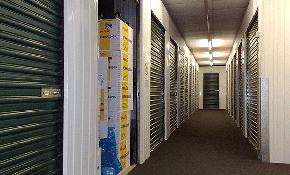(Marcus & Millichap is a GlobeSt.com Thought Leader. Be sure to check out our coverage of their Retail Trends panel at ICSC’s RECon show on May 20. Also: Sign up here for our daily Retail Ticket alert to stay up to date on the latest industry news and RECon coverage.)
NEW YORK CITY-Though there’s a cloud or two ahead, or maybe even a cluster of them, the industrial and office markets can expect to encounter mostly blue skies in the foreseeable future, according to Marcus and Millichap officials, who shared their predictions in a webcast on Thursday.
“All of the numbers, like jobs and retail sales, are improving,” said Hessam Nadji, managing director, research and advisory services. “The sequester [and other factors out of Washington, DC] have formed a headwind,” he added, “but going forward we believe it’s more of a case of robbing from a growth rate that would have been stronger than 2012; it’s not putting us on track to go backward.”
There’s much to be upbeat about, he contended—or at least cautiously optimistic. People seem unaware that “not only have we recovered from the unprecedented nose dive that retail sales took in the recession,” Nadji said, “we’re actually 12% ahead of where we were prior the downturn. Even on a per capita basis, we’re ahead by about 6%. This gives us a solid economic footing.”
Even on the jobs front, there’s some good news, despite stagnant growth, Nadji contended. “Though job growth has been slow, what’s promising is the broad spectrum of jobs that have been added.” In Nadji’s research, he shares, professional and business services are leading the way, with approximately 587,000 jobs added, followed by another 428,000 in trade, transportation and utilities. “Those are the most important segments for the office and industrial sectors,” he said.
Nadij also was looking on the bright side when evaluating absorption. “Class A tenants have skyrocketed, B not as much, but we’re beginning to see a very rapid catch up in terms of fundamentals. Construction has been a huge positive,” he says, referring to slow supply growth, “and will give the market a chance to catch up.” Meanwhile, in industrial, he said, “The vacancy rate is coming down, and the warehouse market recovers quickly after the recovery of retail and transportation.”
He points up particularly compelling markets. “Metros are the flight to safety markets but the higher vacancy markets are starting to show recovery,” Nadjil noted. “Phoenix is having a 220 basis point recovery in vacancy, so markets like this may be good to explore for investment,” he advised. “Places like New York and Boston may be worth exploring too.”
The forecast for the capital markets is equally rosy, according to William Hughes, managing director. “From our standpoint, the market couldn’t get much better,” he said. “There’s a low cost of debt and equity for almost every client in the office and industrial markets, and there’s a wide range of suppliers.” On interest rates, he predicted, “I think they will remain within 20-25 basis points of where they are now for the next 9 to 12 months, unless the economy starts to grow quickly.” Still, he suggested, “I don’t think we’ll go beyond a 25 to 50 basis point increase.” There likely will be changes to the typical lender for office and industrial assets. The capital stack for office and industrial has been life companies and now its CMBS,” Hughes noted. “Sources are distributed evenly between life companies, commercial banks and CMBS. We see CMBS continuing to gain market share over the next year, becoming possibly the largest player. The office sector will continue to be dominated by banks, but CMBS will gain ground,” he said.
A measure of transaction volume also yields an upbeat outlook, added Alan Pontius, managing director, office and industrial. “Transaction counts are trending higher,” he said and, in fact, they’re back to 2005 levels. Whether you look at deals on a dollar or transaction volume basis, we’re in a healthy environment,” he contended.
Even factors that, at first glance, appear negative, aren’t what they seem in the current market. On exports and imports, Pontius said, “we’re starting to flatten out in growth, and that generally wouldn’t be a good indicator for industrial performance. But it doesn’t bother us because of the growth we’ve already seen, coupled with virtually no supply change.”
Overall, Pontius concluded, “There’s no question that capital is eager to play in this market. Owners have reason to feel secure.”

















 Copyright © 2024 ALM Global, LLC. All Rights Reserved.
Copyright © 2024 ALM Global, LLC. All Rights Reserved.